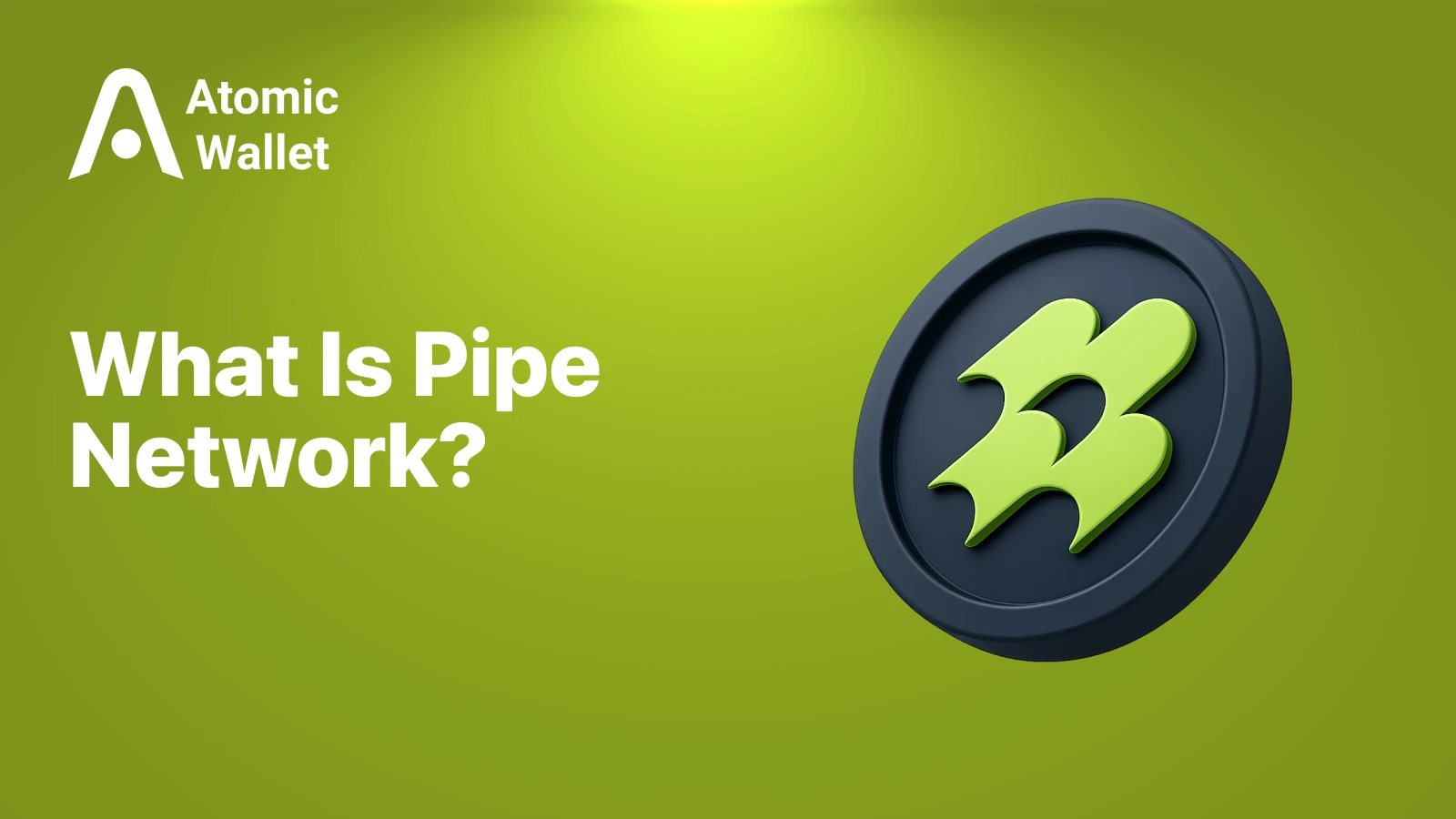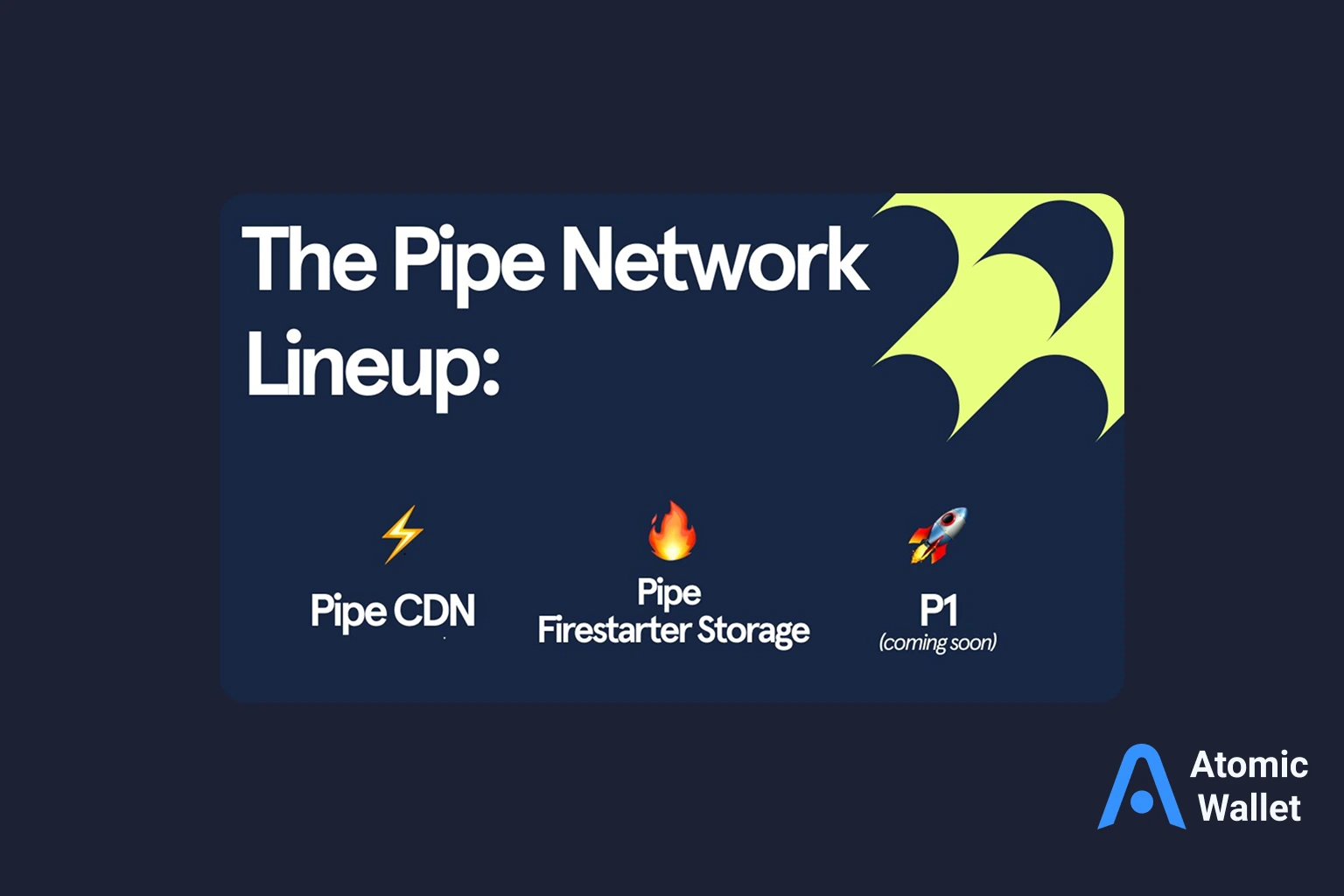Assets

Exchange

Buy Crypto




Pipe Network is reimagining how digital content travels across the internet. Built on Solana, it represents a new era of DePIN (Decentralized Physical Infrastructure Networks) – where blockchain connects directly to real-world infrastructure.
In essence, Pipe Network is a decentralized CDN – a content delivery network powered not by giant data centers but by independent node operators distributed globally.
The project’s mission is straightforward: bring speed, fairness, and transparency to how data moves online. Instead of relying on centralized providers like Cloudflare or AWS, Pipe allows anyone to host a node and earn rewards in $PIPE, its native token. This aligns incentives between users, developers, and infrastructure providers – forming an open, verifiable layer for Web3 connectivity.

At its core, Pipe Network functions like a traditional CDN – it stores and delivers web content from servers (nodes) that are physically closer to the end users.
The difference is decentralization: each node, or Point of Presence (PoP), is operated by independent participants who validate delivery using on-chain cryptography.
Pipe introduces zk-TCP, a Zero-Knowledge proof mechanism that verifies successful data transmission without revealing content. This ensures both privacy and verifiable performance.
Through Solana’s low fees and high throughput, Pipe nodes can process massive traffic volumes while confirming performance proofs directly on-chain.
Anyone can run a node by providing bandwidth and storage. In return, operators earn $PIPE rewards based on actual content served and network uptime – a use-to-earn model that turns infrastructure participation into passive income.
Pipe Network’s design blends cutting-edge Web3 architecture with the proven reliability of global CDNs. Its core innovations include:
Together, these innovations make Pipe Network one of the most ambitious infrastructure plays in Web3 – bridging the gap between decentralized computing and the physical internet.
At the center of the ecosystem lies $PIPE, the native token powering all network operations. It fuels payments between content consumers and node operators, secures the network through staking, and enables decentralized governance.
Key Parameters:
Token Distribution (Preliminary Model):
Utility Highlights:
This structure ties the real-world usage of Pipe directly to token demand: the more content routed through the network, the higher the token’s on-chain activity and value utility.
Pipe Network aims to redefine how internet content is delivered – by turning users into infrastructure providers and replacing middlemen with smart contracts.
Traditional CDNs like Cloudflare or AWS CloudFront rely on centralized servers, closed performance metrics, and corporate pricing. Pipe, in contrast, distributes control across thousands of independent nodes, each verifiable on-chain.
Instead of paying a monthly subscription to a private company, developers pay per transaction in $PIPE, directly rewarding node operators for real performance.
Every interaction is transparent: uptime, bandwidth, and latency are verified through zk-proofs, and all economic activity is settled on Solana.
This model offers three major advantages:
Of course, the approach also carries early-stage challenges – such as reliance on Solana infrastructure and complex hardware requirements for running nodes.
Still, as DePIN momentum grows, Pipe Network stands out as one of the few projects translating blockchain innovation into real, tangible internet performance.
Becoming part of Pipe Network is open to anyone – whether you’re a developer, node operator, or just a curious Web3 user.
Here’s how to get started:
Developers can also integrate Pipe as a CDN layer in their dApps or Web3 websites.
Thanks to Solana’s low-cost architecture, integration is lightweight – and can improve response times by up to 80% compared to traditional hosting.
Early participation may also qualify for future reward rounds or mainnet incentives, as Pipe continues expanding its node base globally.
Pipe Network’s roadmap outlines a clear path toward full-scale decentralization and Web3 adoption.
Phase 1 Testnet (Q4 2025):
Launch of the public testnet, node deployment tools, and zk-TCP verification layer. Node operator onboarding begins, with test incentives and bug bounties.
Phase 2 Mainnet Launch (Q1 2026):
Official release of the $PIPE token, transition to permissionless node participation, and DAO formation for governance. Integration with Solana explorers and analytics dashboards.
Phase 3 Global CDN Expansion (2026+):
Partnerships with major dApps, gaming studios, and streaming platforms to use Pipe as a performance backbone. Multi-chain interoperability planned for Ethereum, BNB Chain, and Polygon.
Key Partners:
Each phase brings Pipe closer to its vision: a self-sustaining, community-powered internet backbone that merges blockchain transparency with enterprise-grade speed.
Like any early-stage decentralized infrastructure project, Pipe Network faces several hurdles before reaching mass adoption.
Despite these challenges, Pipe Network represents a strong DePIN narrative – turning bandwidth into an on-chain asset class with tangible value and measurable impact.
What is Pipe Network?
Pipe Network is a decentralized content delivery network (CDN) built on Solana. It rewards users for providing bandwidth and computing resources to host and deliver online content.
What is $PIPE used for?
$PIPE is the native token for payments, staking, and governance. It’s used to pay for data delivery, reward node operators, and fund ecosystem growth.
Is there a mainnet live?
Currently in the testnet phase (Q4 2025). The mainnet launch is expected in early 2026 with full token functionality.
Can I earn rewards now?
Yes, by running a testnet node or contributing to bug reports. Early participants may qualify for mainnet airdrops or incentive programs.
What makes Pipe different from other CDNs?
Unlike centralized platforms, Pipe verifies uptime and performance on-chain through zk-proofs and pays operators directly in tokens – no intermediaries or subscriptions.
Will Pipe expand beyond Solana?
Yes. Multi-chain interoperability with Ethereum, BNB Chain, and Polygon is planned in the 2026 roadmap.
Pipe Network is reimagining how the internet works – turning bandwidth, uptime, and connectivity into real, tokenized value.
Instead of relying on centralized cloud providers, it gives power back to the users who actually keep the web running.
Built on Solana’s high-performance framework, Pipe combines DePIN mechanics, zk-proof transparency, and crypto-native incentives to create a decentralized CDN that scales with global demand.
Its approach aligns perfectly with the broader shift toward Web3 infrastructure ownership, where communities, not corporations, build and benefit from digital systems.
As the network moves toward mainnet and $PIPE token launch in 2026, Pipe stands out as one of the most tangible use cases of blockchain beyond finance – connecting crypto to the very backbone of the internet.
Secure, scalable, and community-powered – Pipe Network could soon make “decentralized bandwidth” a mainstream reality.
Store, stake, and manage $PIPE securely with Atomic Wallet – your all-in-one hub for the DePIN economy.

Rumble stock price explained: recent performance, volatility factors, and 2025 projections. Learn how politics and creator economics drive RUM.

Metaplanet stock surged as the company doubled down on its Bitcoin strategy and even added 14,618 ETH. Learn what drives Metaplanet stock price, how mNAV works, key risks, and why investors call it the “Japanese MicroStrategy.”